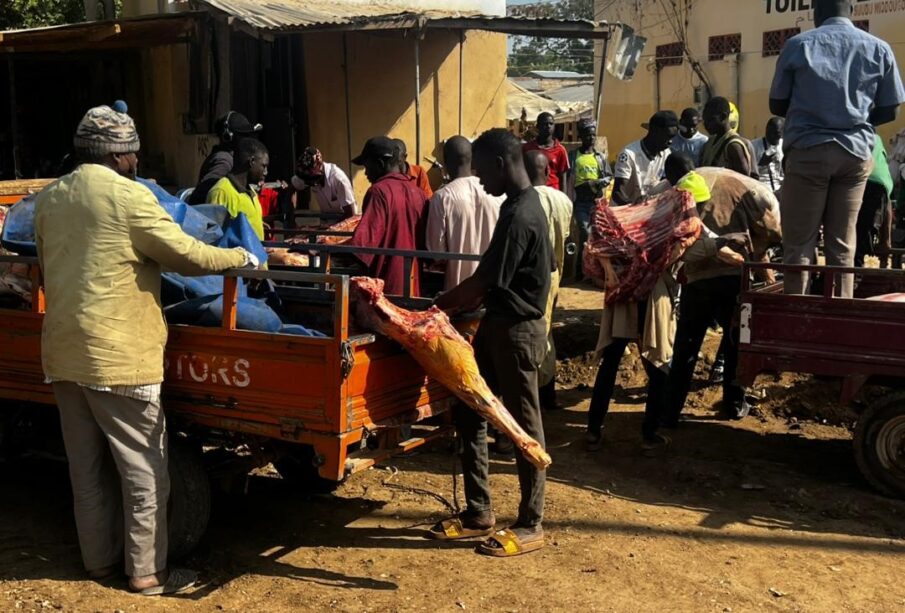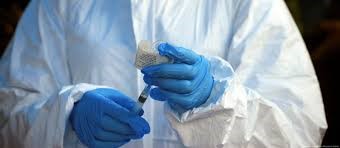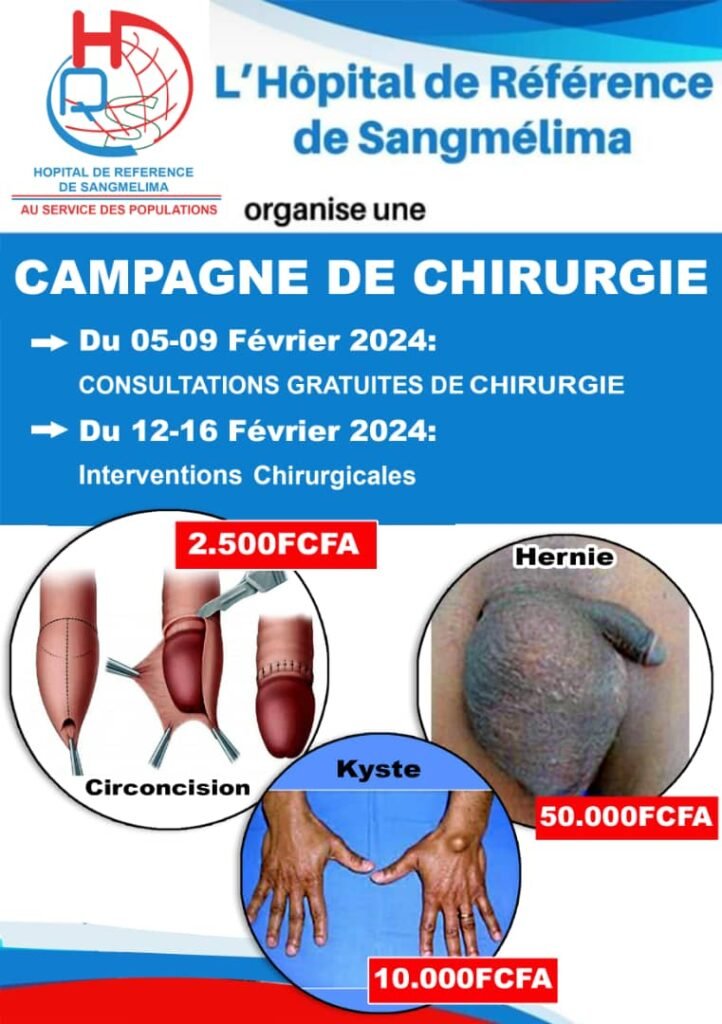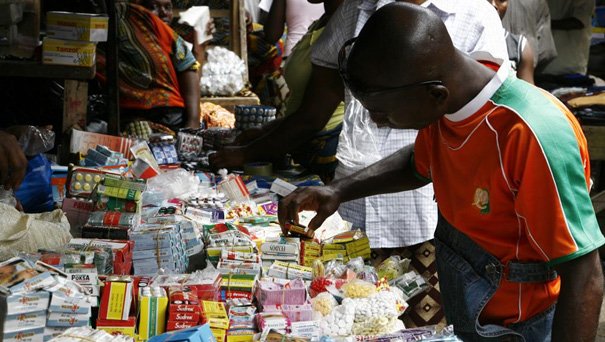Meat sold at the Maroua slaughterhouse market : A worrying lack of hygiene from transport to sale

In Maroua, in the Far North region of Cameroon, meat sold in the slaughterhouse market is exposed to serious health risks, both during transport and during sale. Hygiene management is poor, raising concerns among consumers and health professionals. A situation that highlights the ineffectiveness of health controls and the dangers to public health.
The Maroua slaughterhouse market, the main meat sales point in this city located in the Far North of Cameroon, is a lively place where traders and consumers meet every day. However, this place, which is supposed to provide healthy food products, is the scene of a major problem: a flagrant lack of hygiene, both during the transport of meat and during its sale. This situation endangers the health of buyers, while exposing the flaws in the health control system.
Meat transported in deplorable conditions
The transport of meat from slaughterhouses to market is one of the first steps where hygiene is neglected. Meat carcasses are usually transported in dirty, open tricycles, with no protection against dust, heat and pollution. These conditions are particularly problematic due to the high temperatures that characterize the region for much of the year.
Meat cuts are transported in the open air, sometimes in bulk, which exposes the meat to contamination by pathogens such as bacteria or viruses. Basic hygiene standards, such as the use of airtight crates or refrigerated vehicles, are rarely respected. The risk of microbial proliferation is therefore high, making this meat potentially dangerous for the health of consumers.
Once the meat reaches the slaughterhouse market, it is put up for sale in conditions that leave even more to be desired. The stalls are often set up on the ground, in dusty and poorly ventilated spaces. The lack of refrigeration is flagrant. The pieces of meat are generally laid out without protection, exposed to heat and humidity. On several occasions, traders have been seen handling the meat without gloves, a serious breach of basic hygiene rules. This negligence allows microorganisms to multiply rapidly, thus increasing the risk of foodborne illnesses.
It is common for meat cuts to be cut and sold without having been stored at an optimal temperature. The lack of a continuous cold chain is an aggravating factor that significantly affects product safety. As a result, poorly stored meat can cause serious bacterial infections, such as salmonella or Escherichia coli.
Buyers at the Maroua slaughterhouse market are well aware of the risks posed by these sales conditions. Many have expressed concerns about the quality of the meat. One Maroua resident, interviewed on the subject, confided: “We buy meat out of necessity, but we always have doubts about its freshness and hygiene. The transport and sales conditions are far from reassuring.” Another consumer added: “It is not easy to buy here, you are never sure of what you are eating.”
This distrust is shared by many citizens who find themselves in a situation where, due to lack of choice, they continue to buy meat, despite their concerns. The cost of meat is also a determining factor, as for many there are no cheap alternatives.
Health personnel: insufficient vigilance
Health workers, while aware of the health risks associated with this situation, do not seem to have the resources to ensure effective surveillance. Checks are sporadic and only cover a portion of the traders. According to a health worker, who prefers to remain anonymous, inspections are rare, and violations are often ignored due to lack of resources. “We do not have enough staff to carry out regular checks. We lack the resources to intervene effectively. Sometimes we have to make do with a few spot checks,” he explains.
Local health authorities acknowledge the scale of the problem, but insufficient financial and logistical resources to improve the situation are a major obstacle. In addition, training of traders on sanitation practices remains insufficient. “More training on good hygiene practices should be organized, but also appropriate equipment, such as refrigerators and sales areas that comply with standards, should be provided,” the health worker adds.
Solutions in sight, but challenges to overcome
Faced with this worrying situation, several solutions could improve food safety at the Maroua slaughterhouse market. The establishment of a real regular health control is essential. This includes systematic inspections of meat at each stage of its transport and sale. In addition, the construction of modern refrigeration infrastructures and better designed sales stalls is an urgent need to guarantee the safety of food products.
Raising awareness among traders and consumers about the importance of hygiene, as well as installing a more rigorous control system, are actions that require significant investment, but could save lives by reducing the risk of contamination. The support of local authorities, as well as NGOs specializing in food safety, could help to better supervise the sector and ensure safer sales conditions.
Samuel ADJEWA














